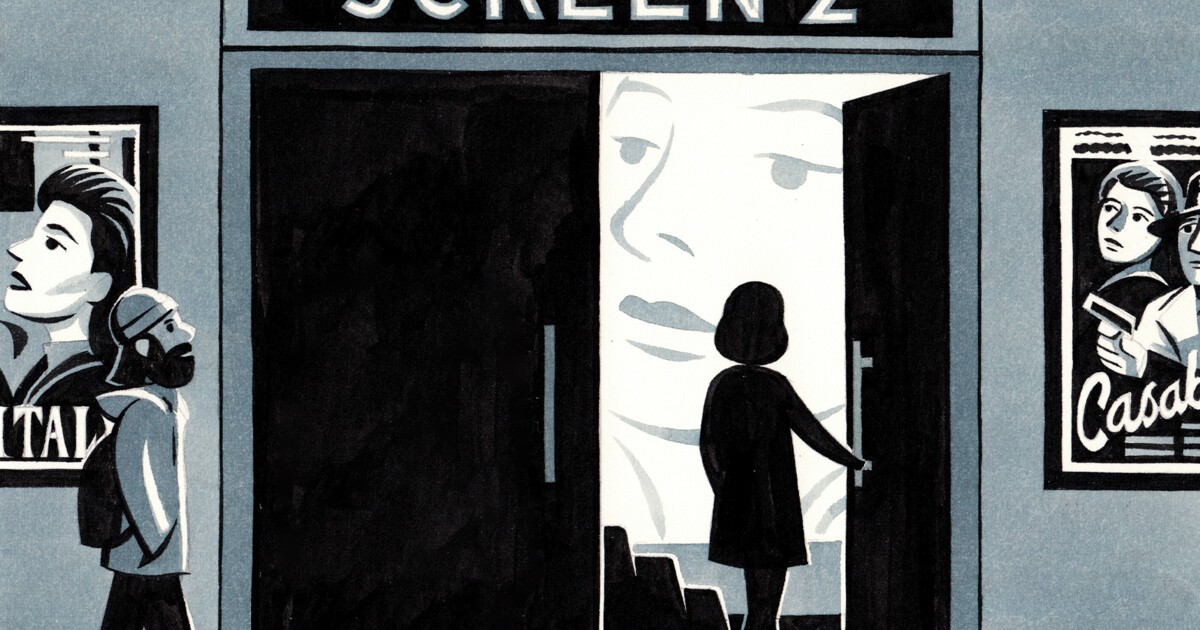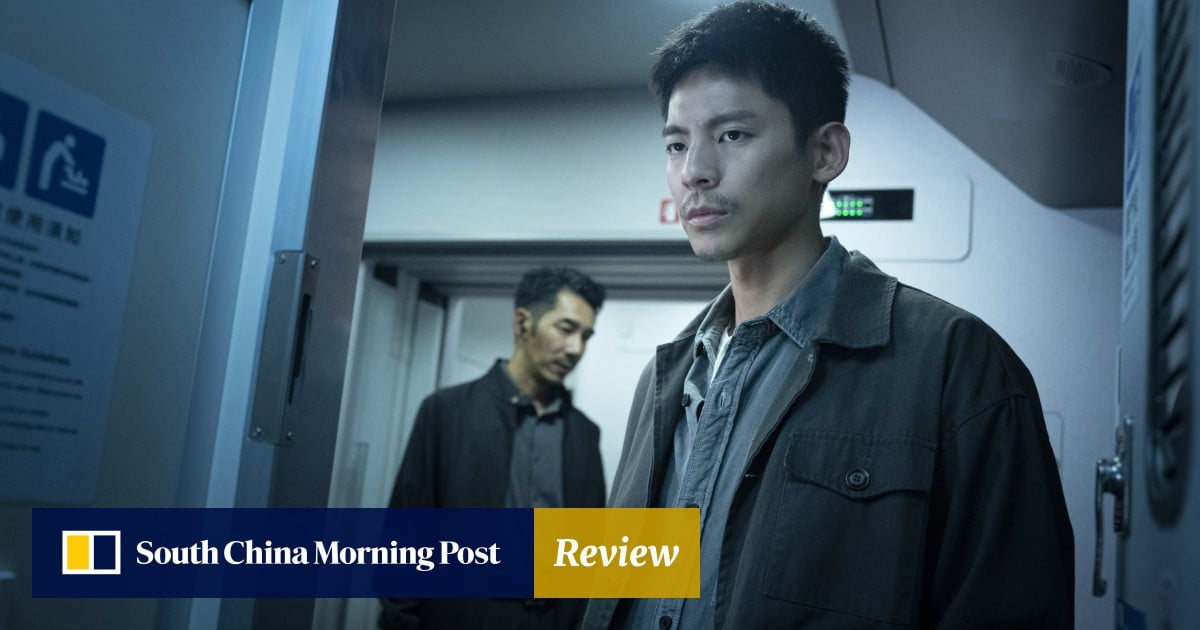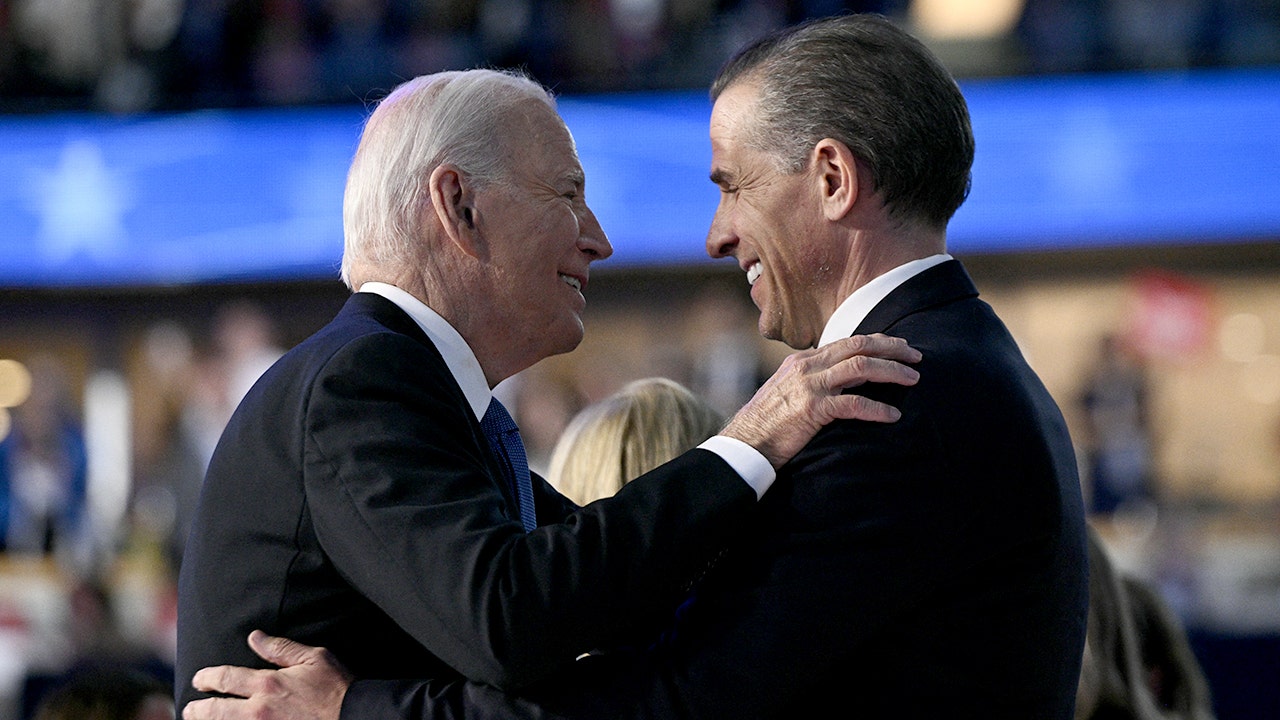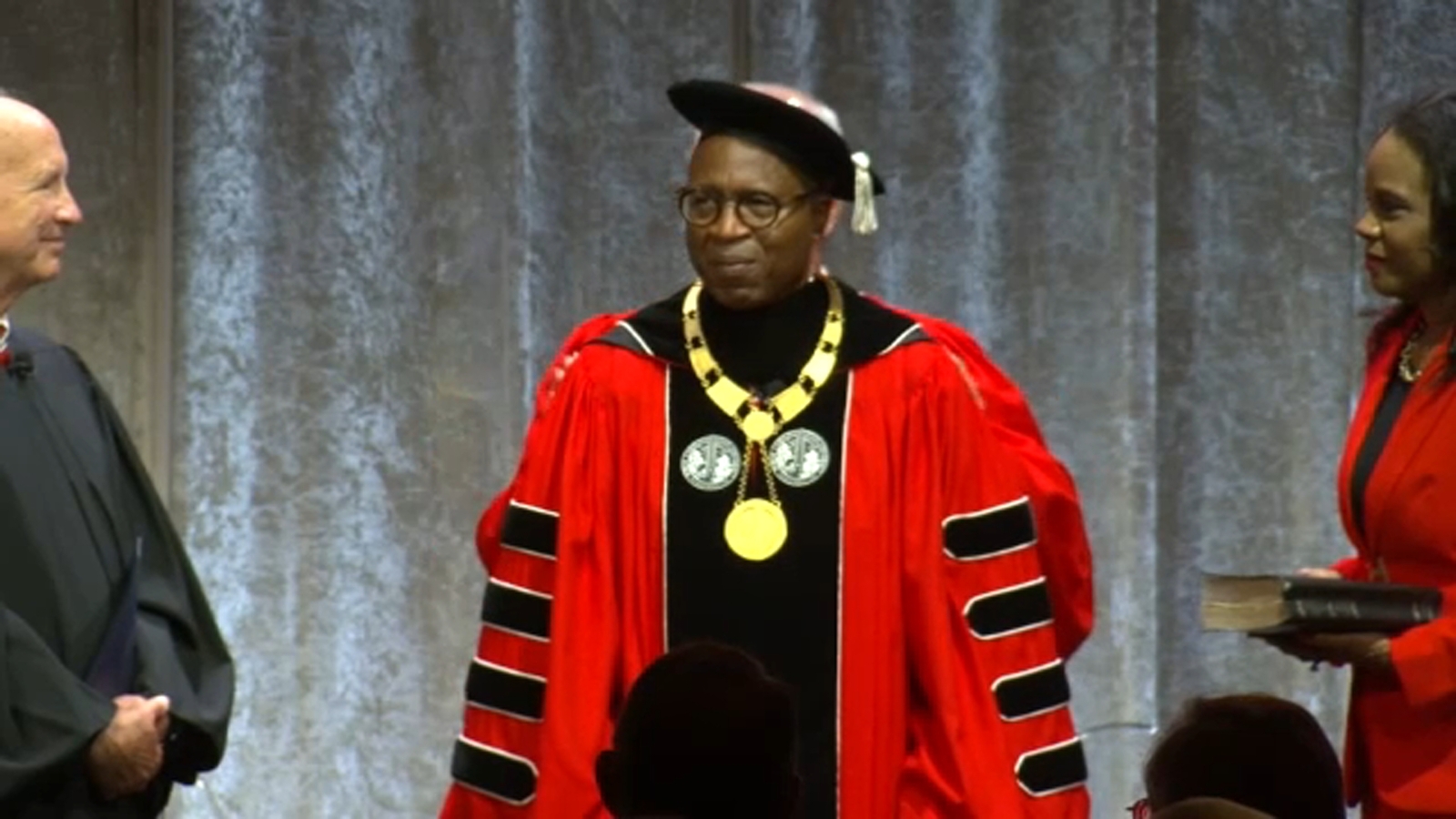Movie Reviews
‘In the Summers’ Review: A Quiet Debut Poetically Explores Forgiveness Between Parent and Child

In the relationship between parents and children, memories can be ravaged battlefields. The validity of certain experiences is tested and accusations of wrongdoing are negotiated. It’s within this charged arena that Alessandra Lacorazza sets her quiet debut film, In the Summers. The feature is a visual poem, an enveloping four-stanza ode to experiences shared by a man and his daughters.
It starts in the summer when Violeta (Dreya Renae Castillo) and Eva (Luciana Quinonez) visit their father, Vincente (René Pérez Joglar) in Las Cruces, New Mexico. Their first encounter, in the parking lot of the tiny town airport, is thick with the stilted awkwardness of distance. Lacorazza, who also wrote the screenplay, avoids specifying why Vincente hasn’t seen his kids, but some information can be gleaned from their bilingual conversations. We know it’s been a minute — so long that Vincente can’t remember what year of school his kids have just finished, among other milestones.
In the Summers
The Bottom Line An enveloping ode to fractious parent-child relationships.
Venue: Sundance Film Festival (U.S. Dramatic Competition)
Cast: René Pérez Joglar, Sasha Calle, Lío Mehiel, Leslie Grace, Emma Ramos, Sharlene Cruz
Director-screenwriter: Alessandra Lacorazza
1 hour 38 minutes
But the children are forgiving, as children tend to be when they are young. As Vincente drives Violeta and Eva around New Mexico, he regales them with stories of his own youth. He’s inherited a house from his mother, a gorgeous Spanish Adobe-style home with a pool in the backyard. Inside are the ephemera of generations: worn photos preserved in inherited frames, furniture so old it has its own secrets, and various containers, each with a story. Lacorazza and DP Alejandro Mejía tour the home. The details are important because later they will serve as evidence.
Of what, exactly, Lacorazza takes her time to reveal. In the Summer moves at the speed of a July afternoon or an August morning — an unhurried and languorous pace. Like last year’s Sundance stunner All Dirt Roads Taste of Salt, In the Summer sways to its own rhythm. The story unfolds slowly and depends on the impressive cast assembled. It’s the subtleties of their performances — nervous exchanges, slight moments when a body recoils — that clue us in to the latent danger of this vacation.
Vincente is a smart man who struggles to be a good father. He is an addict. His temper gets the best of him, and his thirst for thrill lands him in dangerous situations. Vincente wants to be better and, because of Joglar’s protective performance, you want that for him too. He buys the girls gifts, takes them stargazing and teaches them to play pool at his best friend Carmen’s bar. Played by Emma Ramos, Carmen becomes an immediate role model for Violeta, who can’t stop staring at her tapered cut. The next summer, when Violeta returns to New Mexico, she wears her own hair short.
Lacorazza introduces each section of the film with a long take of ritual altars, filled with objects we’ll come to recognize. When Vincente challenges his daughters to a no-utensils pasta eating contest, we remember the mass of red sauce and noodles from the first chapter opener.
The differences between Violeta and Eva become more apparent each summer, and there’s a charm to seeing the shot of the siblings waiting at the airport replicated every couple of years. Unlike Eva, Violeta doesn’t crave Vincente’s attention. She doesn’t even expect it. In this second summer, she’s preoccupied by Camila (Gabriella Elizabeth Surodjawan), the girl her father tutors for extra money. Violeta wonders if the curly haired New Mexico native has a boyfriend or if she has a real chance. Meanwhile, Eva pines for Vincente’s attention, which seems to be reserved for Violeta. At one point, he snarlingly demands why Eva can’t be smart like her sister.
Allison Salinas, who plays teenage Eva, captivates. After a traumatic incident during the second summer, her character comes to New Mexico alone for summer number three. These are a painful couple of months for Eva, who experiences the full heartbreak of unmet expectations from parents. Salinas communicates that pain with her eyes, which slightly tear up whenever Vincente directs his cruelty toward her.
By now we understand that Vincente is an alcoholic, frustrated by his inability to find work and anxious about proving himself. Eva also understands this, and spends most of her third summer wandering Las Crucas alone or helping her father’s new wife (Leslie Grace) care for their newborn. Against these disappointments, the house, so full of promise that first summer, falls into disrepair. With each reunion between father and children, Lacorazza gently guides our attention to the pool, clogged with leaves and dirt, the cluttered porch or the beer bottles accumulating on each surface.
In the Summers closes with a fourth chapter that, despite its stirring moments and brisker pacing, feels less assured than the previous three. Violeta (Mutt star Lio Mehiel) and Eva (Sasha Calle) are adults when they return to New Mexico. Violeta has transitioned, and will be starting graduate school in the fall. Eva’s fate is more obscure, but from the sunglasses she refuses to take off, you can sense the pain of that lonely summer hasn’t left her. Vincente is also different; his changes are marked by no alcohol in the house, a revived pool and an endearing shyness around his kids.
As Vincente tries to atone through insistent invitations, Violeta and Eva maintain firm boundaries with their father. They rent a place instead of staying at his house and a strained politeness blights their interactions with him. The presence of Vincente’s other child, Natalia (Indigo Montez), reveals the chasm between who Vincente was and who he is now. Some plotlines in this section — like the one between adult Violeta and Camila (now played by Sharlene Cruz) — are dogged by a lack of resolution.
But when Lacorazza focuses on the relationship between Violeta, Eva and Vincente, In the Summers feels steadier. In this space, Lacorazza considers the realities of forgiveness and wonders if healing is more about moving forward than it is about letting go.
Full credits
Venue: Sundance Film Festival (U.S. Narrative Competition)
Production companies: Lexicon, Bluestone Entertainment, Exile Content Studio, Assembly Line Entertainment, 1868 Studios, Arci Films, Cinema Maquina, Luz Films
Cast: René Pérez Joglar, Sasha Calle, Lío Mehiel, Leslie Grace, Emma Ramos, Sharlene Cruz
Director-screenwriter: Alessandra Lacorazza
Producers: Alexander Dinelaris, Rob Quadrino, Fernando Rodriguez-Vila, Jan Suter, Daniel Tantalean, Janek Ambros, Lynette Coll, Sergio Alberto Lira, Cristóbal Güell, Cynthia Fernandez De La Cruz, Slava Vladimirov, Stephanie Yankwitt
Executive producers: Isaac Lee, Henry R. Muñoz III, Jules Buenabenta, Richard Saperstein, Brooke Saperstein, Erick Douat, Arturo Sampson, Alexandra Mishaan, Bradley Feig, Justin Brown
Director of photography: Alejandro Mejía, A.M.C.
Production designer: Estefania Larrain De La Cerda
Costume designer: Fernando A. Rodriguez
Editor: Adam Dicterow
Music: Eduardo Cabra
Casting director: Stephanie Yankwitt, C.S.A.
Sales: CAA, XYZ
In English, Spanish
1 hour 38 minutes

Movie Reviews
‘Bugonia’ Movie Review: Wonderfully Weird and Disturbingly Smart

Bugonia Movie Review
Yorgos Lanthimos’ films are either something you love or you leave the theater asking WTF did you just watch. But for me, I love his work. It’s delightfully original and unpredictable (though I did predict the ending in this one—as there are some easter eggs for you to pay attention to throughout). With “Bugonia,” Lanthimos delivers a wonderfully weird film that does a superb job of conveying a powerful cultural message about corporate greed, environmental collapse, and the dangerous allure of conspiracy thinking.
This is Lanthimos at his most provocative, crafting a darkly comedic thriller that feels uncomfortably timely in our current age of misinformation and ecological crisis (not to mention all the talk and conspiracy around 3I Atlas this week and the question of whether or not we’re alone in the universe). The film asks thorny questions about power, exploitation, and whether humanity is worth saving at all… questions that linger long after the credits roll.
So, What’s Bugonia About?
Bugonia follows Teddy Gatz (Jesse Plemons), a sweaty, paranoid beekeeper and conspiracy theorist who believes Earth is under the control of aliens from the Andromeda galaxy. Working a menial job at a pharmaceutical warehouse while tending to his backyard bee farm, Teddy has fallen deep into the rabbit hole of online conspiracy theories. He’s convinced that Michelle Fuller (Emma Stone), the ruthless CEO of the company he works for, is actually an alien intent on destroying humanity through colony collapse disorder… the mysterious phenomenon killing off bee populations worldwide.
Enlisting his impressionable teenage cousin Don (Aidan Delbis), who is on the autism spectrum, Teddy kidnaps Michelle and confines her in their dilapidated basement. What follows is a claustrophobic psychological battle as Teddy attempts to torture a confession out of Michelle. At the same time, Michelle is using every manipulation tactic in her corporate playbook to try to escape. The film is loosely based on the 2003 South Korean cult classic Save the Green Planet! by Jang Joon-hwan, but screenwriter Will Tracy (Succession, The Menu) reimagines it for our current moment of conspiracy culture and corporate malfeasance.
The setup sounds bonkers… and it absolutely is… but Lanthimos grounds the absurdity in real anxieties about class exploitation, environmental destruction, and the sense that ordinary people have been abandoned by a system that doesn’t care about them. Teddy may be unhinged, but his rage isn’t entirely misplaced.
Bugonia Movie Trailer
Bugonia Movie Review: What I Liked and Didn’t Like
What I found most thrilling about Bugonia is how expertly Lanthimos keeps you off-balance throughout. For most of the runtime, we’re led to believe that Teddy is simply a dangerous, paranoid individual losing his grip on reality. Michelle’s denials seem entirely reasonable. However, Lanthimos plants subtle clues that prompt you to question everything. Is she playing him? Is she actually an alien? The film walks this tightrope with remarkable dexterity, and that ambiguity becomes the source of tremendous tension.
While Bugonia is largely successful, there are moments where it doesn’t quite work. Some of the supporting characters feel underdeveloped, particularly Stavros Halkias as a bumbling, inappropriately sexual cop investigating Teddy’s home. The character provides occasional comic relief but feels like a vestige from an earlier draft that doesn’t quite fit the film’s increasingly dark trajectory.
The film’s structure, which is divided into three acts marking the days until the lunar eclipse when Teddy believes Michelle’s mothership will arrive, sometimes makes the pacing feel uneven. Certain sequences in the basement drag on, though the psychological warfare between Stone and Plemons remains compelling throughout. There are also several plot threads that feel frustratingly unresolved, including aspects of the pharmaceutical company’s broader operations and some of the conspiracy theories Teddy references, but the film never fully explores.

The Script
Will Tracy’s screenplay is wickedly sharp, filled with darkly comic dialogue that cuts to the bone. The conversations between Teddy and Michelle function as ideological sparring matches. He’s convinced she represents alien overlords destroying the planet, while she insists she’s just a businesswoman making difficult decisions. What makes these exchanges so effective is that both characters have valid points buried beneath their rhetoric.
Tracy, whose work on Succession and The Menu demonstrated his talent for skewering the ultra-wealthy, brings that same satirical edge to this project. Michelle’s corporate doublespeak, offering employees the “option” to leave work at 5:30 pm while making it clear no one should actually take that option, rings painfully true. The script doesn’t let her off the hook for the exploitation her company engages in, even as it acknowledges Teddy’s response is unhinged.
The title itself carries layers of meaning that deepen the film’s themes. “Bugonia” refers to an ancient Greek belief that bees could spontaneously generate from the corpses of cattle… a ritual of death creating new life. It’s a perfect metaphor for the film’s central question: can something good emerge from something rotten? Can humanity be redeemed, or must it be sacrificed for Earth to survive?
Tracy’s script is most effective when exploring how conspiracy thinking emerges from legitimate grievances. Teddy isn’t wrong that pharmaceutical companies have caused immense harm, that wealth inequality has skyrocketed, or that bee populations are collapsing. Where he goes wrong is misidentifying the source… blaming aliens rather than recognizing the systemic forces actually responsible. It’s a pointed commentary on how conspiracy theories often start with real problems before spiraling into fantasy.
The dialogue crackles with tension and dark humor. When the chained-up Michelle pleads, “Can we have a dialogue, please?” and Teddy shoots back, “Don’t call it a dialogue. This isn’t Death of a Salesman,” it’s both genuinely funny and revealing about how each character views their predicament. Tracy’s ear for how people talk past each other, each trapped in their own worldview, gives the film much of its unsettling power.

The Acting
The performances are nothing short of extraordinary. Stone and Plemons, reuniting after they collaborated on last year’s Kinds of Kindness, create an electric dynamic that feels like watching two master chess players trying to outmaneuver each other. Stone turns in what might be a career-best performance, which is saying something for a two-time Oscar winner. Even with her head shaved and covered in antihistamine cream (Teddy believes this prevents her from communicating with other aliens), she commands every frame with fierce intelligence. Her take on Michelle alternates between haughty corporate speak, desperate bargaining, and calculating manipulation, and Stone makes each shift feel completely authentic.
Plemons delivers an absolutely towering performance as Teddy, making him simultaneously terrifying and heartbreakingly pitiable. He embodies the sweaty paranoia of someone who has lost themselves in conspiracy theories, yet Plemons never lets us forget the wounded soul underneath. When we eventually learn the personal tragedy that fuels Teddy’s vendetta – his mother (Alicia Silverstone in a brief but haunting appearance) fell into a coma after participating in one of Michelle’s company’s disastrous drug trials – his actions take on a devastating new dimension.
But the real heart of the film belongs to Aidan Delbis as Don, making his feature film debut at age 19. Playing a character who, like himself, is autistic, Delbis brings an understated innocence that serves as the film’s emotional anchor. Don loves his cousin Teddy. He’s the only family he has, but he’s deeply uncomfortable with the violence and increasingly questions whether what they’re doing is right. Delbis holds his own against two powerhouse actors, and his performance is so moving that Lanthimos reportedly teared up on set for the first time in his career.
The Visuals
The film’s visual approach, captured by cinematographer Robbie Ryan using the high-resolution VistaVision format, creates an intensity that perfectly matches the material. The stark contrast between Michelle’s sterile corporate world and the ramshackle decay of Teddy and Don’s home becomes a visual metaphor for the class divide at the film’s core. The basement torture sequences are lit with harsh, unforgiving brightness, making everything feel uncomfortably exposed, while the flashback sequences adopt a dreamlike black-and-white aesthetic.

Overall Thoughts
Bugonia is Lanthimos’ most accessible film, which is saying something for a movie about conspiracy theorists kidnapping a CEO they believe is an alien. Unlike the baroque excess of Poor Things or the anthology structure of Kinds of Kindness, this is a relatively straightforward three-character chamber piece. But don’t mistake accessibility for simplicity. This is still deeply weird, frequently disturbing, and builds to one of the boldest endings I’ve seen in recent cinema.
The film’s final act delivers the kind of gut-punch twist that recontextualizes everything that came before. Without spoiling specifics, I’ll say that if you’ve been paying attention to the clues Lanthimos plants… you might see the ending coming. I certainly did, and it made the ending land even harder because of how meticulously it’s been set up.
What makes the conclusion so effective is that it doesn’t offer easy answers or comfort. This isn’t a film about heroes triumphing over evil. It’s about systems of power, cycles of violence, and the question of whether humanity has become too corrupted to save. The final images, which I won’t describe here, are haunting and deeply pessimistic about our collective future. Some viewers will find it nihilistic; I found it bracingly honest about the state of the world.
Bugonia isn’t perfect. Some subplots feel underdeveloped, the pacing occasionally drags, and not every tonal shift lands perfectly. But when it works, which is most of the time, it’s thrilling, thought-provoking, and genuinely unpredictable. The performances are career-defining, the visual approach is striking, and the themes feel urgently relevant.
For longtime Lanthimos fans, this is a return to the harsher, more uncompromising style of his earlier Greek films after the relative accessibility of The Favourite and Poor Things. For newcomers, it’s probably his most approachable work, even if “approachable” is a relative term. Either way, it’s essential viewing for anyone interested in cinema that challenges and provokes rather than simply entertains.
Bugonia Movie Review Grade
Grade: B+
Movie Reviews
Leo Robson · Diary: What I Saw at the Movies

During a four or five-year period at the turn of the millennium, I went to the cinema around six hundred times – or, I should say, I saw around six hundred films at the cinema, since many of the visits were for double, triple and occasionally quadruple bills. I wasn’t a film critic or festival programmer or even an aspiring director. I was just an adolescent schoolboy and, in my parents’ probably loving description, a ‘weirdo’.
Stanley Cavell wrote that his memories of movies seemed so closely tied to memories of his life that he was no more likely to write a book about film than to write an autobiography (he ended up doing both). I could say the same. On the night of Tony Blair’s first election victory, I was in my bedroom going through a tin of memorabilia for the hijack thriller Con Air, which I hadn’t yet seen. I received my first text message on the way to Julien Temple’s second film about the Sex Pistols, The Filth and the Fury. At a school interview, I told a teacher that I’d been to see The Matrix, to which he replied ‘isn’t that a 15 certificate?’ – the final nail in the coffin. To get into my back-up option, I submitted something I’d written about another recent film, Bernardo Bertolucci’s Besieged (an adaptation of James Lasdun’s story ‘The Siege’), which was somehow rated PG. Much of the time I spent with my parents was in foyers and auditoriums across London, and on the journeys there and back. My mother was the more regular companion, my father the more long-suffering: in the course of five days in August 1999 he sat through the Dardenne brothers’ Rosetta, Bruno Dumont’s L’Humanité and seven films by Robert Bresson. It was the summer I learned the word ‘austere’.
My taste, or at least my appetite, was indiscriminate. As Pauline Kael wrote in 1969, ‘when you’re young the odds are very good that you’ll find something to enjoy in almost any movie.’ Cavell, whose own ‘odd education’ took place in part at the Berkeley cinemas where Kael worked as a programmer, put it in more positive terms: ‘To be drowning in the material is really the only way – not to care too much what you’re seeing, to care a lot about what you think about what you’re seeing.’ And I did care, filling exercise book after exercise book with star ratings and plot synopses for Meg Ryan romantic comedies, Disney cartoons, John Grisham adaptations, disaster movies and action thrillers, along with harder-breathing fare from the Dogme 95 group and Leos Carax’s Pola X, remorselessly grim and containing shots of what the censor called ‘actual’ sex, which I saw on 12 May 2000 as an alternative to Gladiator. François Truffaut, the patron saint of this weirdo sub-type, said that no child, on being asked to name their dream, replies: ‘I’m going to be a movie reviewer.’ He was wrong.
The beginning of my obsession coincided with the centenary of the Lumière Brothers’ first cinematograph projection, on the boulevard des Capucines in 1895, of workers leaving a factory. The craggiest reflection on the centenary came from Susan Sontag – an instantly notorious essay, less birthday card than death certificate. The history of the medium took the shape of a life-cycle, she argued, and we were now in the stage of ‘irreversible decline’. Sontag mourned the loss of cinephilia, the ‘very specific kind of love’ that had dominated in the 1960s. Back then, she wrote, ‘cinema had apostles. (It was like religion.) Cinema was a crusade. For cinephiles, the movies encapsulated everything. Cinema was both the book of art and the book of life.’
What’s strange about Sontag’s emphasis on cinephilia is that she opposed the central cinephilic crusade – the elevation of ‘old Hollywood genre films’. Sontag described the taste for such movies, exhibited in journals such as Cahiers du cinéma in the 1950s, as ‘passionate (or sentimental)’, arguing that it was rooted in a denial of the fact that the Hollywood studio system was collapsing and that the kind of commercial entertainment the French critics had enjoyed in their youth was being swept aside by Italian films ‘of the highest seriousness’. This was wildly wrong, an attempt to downplay the debt that European cinema owed to American mass culture – at least as large as that owed to Roberto Rossellini. Before videos, the evanescence of film stock and the unavailability of so many films meant that cinephilia had an elegiac component. But the idea that André Bazin, Éric Rohmer and their younger colleagues at Cahiers were watching The Man Who Knew Too Much (1956) in a valedictory spirit was a figment of Sontag’s own nostalgia. (Rohmer, in his essay ‘Redécouvrir l’Amérique’, describes a moment of conversion in the late 1930s.)
In interviews, Sontag conceded that there were still great filmmakers working in Russia, Greece, Poland and Hungary, as well as Taiwan and Iran. The other prominent declinist, David Thomson, wasn’t even convinced of that. The only director in Sontag’s contemporary pantheon who featured in the edition of Thomson’s Biographical Dictionary of Film that I owned was the oldest, Theo Angelopoulos, and in his entry Thomson lamented that ‘there are so few masters left now.’ For Thomson, in his essay ‘Who Killed the Movies?’ (the culprits were Steven Spielberg and George Lucas), ‘the death of film’ could be attributed to its ‘woeful removal from the cutting edge of our culture’.
It was hard to miss the element not just of fogeyish intransigence but of generational warfare. Sontag talked about ‘the young’, Thomson of ‘the generation now in their twenties’. True cinephilia, Sontag wrote, ‘tells us that the Hollywood remake of Godard’s Breathless cannot be as good as the original.’ (Though would a true cinephile refer to it as Breathless?) When Sontag complained that ‘assaultive images’ and ‘faster and faster cutting’ had produced ‘a disincarnated, lightweight cinema that doesn’t demand anyone’s full attention’, she failed to appreciate the way audiences responded to the shoot-outs or chase sequences in the work of the Hong Kong directors John Woo and Ringo Lam or in Jerry Bruckheimer productions. We were experiencing a variant of the aesthetic excitement that Sontag claimed was no longer possible. The modern filmgoer was a descendant of the mid-century cinephile – so long as you allowed popular cinema back into the story. This was understood by Jacques Rivette, the former Cahiers critic who became a leading figure in the French New Wave. In an interview in 1998, Rivette said that he tried to ‘stay attentive to all the greats and also the less than greats’. He spoke about his original canon – Howard Hawks, Alfred Hitchcock, Bresson, Rossellini – but also about recent films such as Alien: Resurrection (‘inventive, honest and frank’) and Paul Verhoeven’s Starship Troopers (‘I’ve seen it twice and I like it a lot’).
At some point I wrote a fan letter to David Thomson. In his reply, he urged me to develop interests other than film. That was Spielberg’s problem, Thomson said – he didn’t know anything else. But there seemed little danger of that in my case. (Not that it was really true of Spielberg.) Films were always telling you about other things. In 1998 alone there were adaptations of Les Misérables, The Woodlanders, Great Expectations, Lolita, Washington Square, Mrs Dalloway, Cousin Bette, Oscar and Lucinda, Julian Barnes’s Metroland and three works by Conrad. From a Daily Express review of The Talented Mr Ripley in February 2000, I learned three new words in the space of a single clause: ‘a conspiracy of patriarchal decorum in which even Dickie’s father colludes’. Also, from the same piece, ‘amorality’, ‘deferential’, ‘enervated’, ‘homoeroticism’.
It was relevant that neither Sontag nor Thomson had ever worked as a regular reviewer. Kael was a much more useful guide. She had retired from the New Yorker, but to a consumer of new movies she could still feel like the critic of the moment. After the gigantic Waterstone’s opened on Piccadilly in 1999, I saved up to buy the collections of her reviews, and for the next few years I rarely went anywhere without one of her books. Kael favoured a poppier, peppier approach. She believed that if ‘we’ve grown up at the movies we know that good work’ is not continuous ‘with the academic, respectable tradition’. Receptive to the claims of both ‘trash’ and ‘art’, she liked art with a sense of fun and trash that believed in itself. The elevation of Hitchcock missed the point of his films, and the desire to emulate him could lead ambitious directors astray, notably Truffaut. The French critics hadn’t erred in admiring the skill and visual interest of genre films, but in making grand claims for their intellectual substance and psychological depth.
Kael didn’t share Sontag’s view that the mid-1960s were a halcyon period. For her, it was a time when she worried that movies no longer ‘meant something to people’ and might just become ‘a barrage of images’. Her first book, I Lost It at the Movies (1965), begins with an essay that asks: ‘Are Movies Going to Pieces?’ The movement against interpreting films, as promoted by Sontag, had encouraged the arthouse crowd to behave in more or less the same way as ‘the larger audience’, just letting movies ‘happen’ to them. The films that ‘look like art’ were disabling intelligent thought no less than lame farces and blockbuster musicals. In the polemic ‘Fantasies of the Arthouse Audience’, Kael complained about the ‘principle of ineffability’ embraced by Michelangelo Antonioni, Alain Resnais and Ingmar Bergman and the ‘spiritual style’ of directors such as Bresson and Yasujirō Ozu. She looked to the silent era and the 1930s, the straightforward genre films of the 1940s (John Huston, not Hitchcock and Hawks) and ‘natural’ foreign directors like Jean Renoir, Max Ophüls and Vittorio de Sica. In 1967, she lamented the frustrated career of Orson Welles, someone who could ‘unify’ educated and uneducated audiences – the quality that makes movies ‘a great popular art form’.
If I felt that Kael was addressing my experience of movies – addressing me – it was partly because I was catching up with those directors, but mainly because I was living in the aftermath of the next developments she described. Barely a month after the Welles piece, Bonnie and Clyde was released (Kael’s review of it got her the New Yorker job), initiating what, by March 1972, she felt confident calling a ‘legendary period in movies’. In The Last Picture Show, Welles’s friend and protégé Peter Bogdanovich had made ‘a film for everybody’. The Godfather was an ideal merging of ‘commerce and art’. Martin Scorsese’s Mean Streets was ‘a triumph of personal filmmaking’ and a gripping thriller. For Sontag, these films were merely a case of Hollywood ‘plagiarising’ European innovations and rendering them ‘banal’. For Kael, they rejuvenated what had become stale in commercial cinema.
It didn’t last. By the late 1970s and early 1980s there was a turn to glib pastiche, prompted by the musical flops of Bogdanovich, Francis Ford Coppola and Scorsese as well as the Lucas-Spielberg collaboration Raiders of the Lost Ark. But Kael’s concerns were quickly dispelled by the work of directors who revealed the possibilities of a committed postmodern aesthetic: Brian De Palma, Neil Jordan, David Lynch, Tim Burton, Gus van Sant, Stephen Frears, the Coen Brothers, Pedro Almodóvar, Spike Lee. Even during the darkest days (in 1983 Kael referred to ‘a low, low point’), there was always something to recommend. And at the start of Hooked, a collection of pieces from 1985 to 1988, she notes that the period ‘begins rather lamely, and then suddenly there’s one marvellous movie after another’. These were the harbingers or, in some cases, first steps of what made the 1990s and early 2000s such a happy, fruitful time to be a filmgoer.
Kael exerted widespread influence: on directors such as Quentin Tarantino, David O. Russell, Wes Anderson, Richard Linklater and David Fincher, and on the critics in whose work I was immersing myself, the so-called ‘Paulettes’ who populated the culture sections of American publications (notably David Edelstein and Stephanie Zacharek). But not only them. Kael had been dismissive of British film criticism: ‘If we recall an article or review,’ she wrote, ‘it’s almost impossible to remember which Peter or which Derek wrote it.’ But thanks in part to her influence, I was spoiled. Next to my bed I had a filing cabinet with cuttings from British newspapers by Ryan Gilbey, Jonathan Romney, Nigel Andrews, Anne Billson. There was also Adam Mars-Jones, writing in the Independent and then the Times. Like Kael, Mars-Jones could see the point of Spielberg without overlooking his weaknesses. Both described being a regular film reviewer as ‘the best job in the world’. Mars-Jones said that film was doing ‘very nicely, thank you, despite all the obituaries’.
Kael’s approach had its limitations. She saw films only once. Reporting on the San Francisco International Film Festival, she said that the range of national cinemas on display – ‘Yugoslavia, Bulgaria, Romania, Korea, Thailand et al’ – left her wondering if the organiser was a stamp collector. While you could hardly be an avid or grateful filmgoer in the late 1990s if you shared Sontag’s diagnosis, there was still a lot to learn from her curiosity and exacting standards. In the 1990s, an age of more, it felt natural to go further in both directions and embrace the ‘two completely opposite strains’ identified by Romney: ‘event movies’ and ‘anti-event movies’, Con Air and Rosetta, say, or, in Romney’s examples, earthlings repel alien invasion (Independence Day) and man takes dying mother for walk (Aleksandr Sokurov’s Mother and Son).
Watching the films – reading about them, thinking about them – was only part of the filmgoing experience. As Kael put it, there’s ‘a good movie’ and there’s also ‘slipping into a theatre’. In his centenary essay, Thomson took aim at the modern cinema: ‘a lifeless pit of torn velour, garish anonymity and floors sticky from spilled Pepsi’. Like the narrative of decline, this image was a decade out of date. In Gilbert Adair’s novel Love and Death on Long Island (1990), set in the mid to late 1980s, Giles De’Ath, a novelist and art historian who has never ‘partaken of the joyous simplicity of filmgoing’, shelters from the rain under the ‘massive overhang’ of a local cinema (the Odeon Swiss Cottage in all but name). Stepping inside, he finds the carpeting so threadbare that the company logo is illegible; the ‘streaky, slab-like concrete walls’ and ‘scratched, discoloured paint’ are indicative of ‘urban disuse and disrepair’. Yet the period between Giles’s visit and Thomson’s dirge was marked by radical change.
I was born on 10 October 1985, the day Orson Welles died. More significant for my purposes, that November AMC opened the country’s first ‘multiplex’ cinema, in Milton Keynes, a development that coincided with British Film Year, a government initiative to boost filmgoing. The initiative worked. Attendance rose. The Empire, on Leicester Square’s north side, was reopened in 1989 by Prince Charles, while the cinema named after him, on Leicester Place, opened in its current incarnation in 1991, offering tickets for £1. Cinemas were built at Staples Corner, the junction where Edgware Road meets the North Circular and the M1 (six screens, 1991); in the Trocadero on Coventry Street (seven screens, 1991); and on the Charing Cross Road side of Leicester Square (nine screens, 1993). These new or renovated institutions were proud of their wheelchair facilities, air conditioning, Dolby stereo sound, projection technology, luxury seating and ‘computer-designed sight lines’, along with their ‘well-stocked kiosks’.
I liked going to Staples Corner and Swiss Cottage, but most of my filmgoing took place in the West End, in what became for me a magic zone. It stretched from the ABC on Panton Street, which had been Europe’s first four-screen cinema, and the Westminster Reference Library, which had a decent collection of film books, to the ABC on Shaftesbury Avenue, with its forty-metre bas-relief depicting drama through the ages. It included the Plaza on Lower Regent Street and the ABC on the third floor of the Swiss Centre, where, on my first solo outing (if you discount the time my father walked out of Fear and Loathing in Las Vegas after fifteen minutes), I took the rickety lift to see Angelopoulos’s Eternity and a Day, despite knowing my parents had been bored to tears by his previous film.
Jeremy Cooper’s short novel Brian, which appeared in 2023, offers a portrait of a cinephile in contemporary London. The central character attends only one cinema: the National Film Theatre, now known as the BFI Southbank. Cooper doesn’t give any dates, but the novel appears to take place between 1988 and 2016, when Brian is more or less a ‘nightly regular’ at the BFI. Cooper portrays the same sense of solidarity and ritual among Brian’s new friends as Adair depicted in his novel The Holy Innocents, about soixante-huitards at the Cinémathèque Française (adapted by Bertolucci as The Dreamers). Derek Malcolm, the Guardian film critic from 1971 to 1997, regretted that the ‘type of film buffs who would queue outside the NFT in the 1960s to see all-night programmes of obscure movies doesn’t seem to exist nowadays’. In the world depicted by Cooper, buff culture is alive and well.
Most of Brian is devoted to the period since 1997. Cooper’s focus on a repertory cinema prevents him from getting bogged down in questions about the state of the art. What he offers instead of context or analysis is a psychological study of the filmgoer. Brian makes film ‘his thing’ – without consciously deciding to do so, ‘without really noticing the change’ – after a few failed hobbies, much as I had earlier flirtations with football and pop music. (My father probably preferred the toils of a Bresson retrospective to seeing Oasis at Knebworth.) And we may have been drawn to film for similar reasons: in Cooper’s phrasing, ‘the safety of repetition’, ‘self-protection’, a way of enjoying one’s ‘separateness’ and an opportunity for ‘inner identification’, as well as an occasion for pleasure and a source of education. Until Brian becomes a BFI regular, we are told in the opening paragraph, his ‘nervous concern’ had been focused on work. Now it is redirected to movies, looking at programmes, planning outings, post-film chatter.
Truffaut said that for a long time he had overlooked ‘the neurotic aspect of my love for cinema’. If I also did this, it was probably because of the lack of overt neuroses in my everyday existence but especially around filmgoing, the lack of pedantry I brought to the act itself – being unbothered, for example, by the fire-exit sign or by people drinking Pepsi. I preferred to get to things on the opening weekend, but I didn’t really care. Truffaut was talking about subtler signs, the fears or forms of mess that filmgoing sublimates or tidies away. He noted that in his day the ‘most cinephilic cinephiles’ tended to like happy endings, stories of heroes and villains. The French filmmaker and critic Jean Epstein compared going to a movie to entering a state of hypnosis, an aesthetic experience that ‘modifies the nervous system’ much more than reading does. And it would be perverse to deny that watching the dead speak or past actions embalmed in an eternal present tense plays some role in what we find comforting about movies.
In a passage I’d overlooked until I read Brian, Kael defined movies as ‘the sullen art of displaced persons’ and reasoned that we are less likely to seek out their ‘diminishing pleasures’ if we have a ‘decent, useful life’, ‘other things to do’. ‘If life at home is more interesting, why go to the movies?’ It’s true that, in going to see a film, you are choosing not to do a lot of other things. If it becomes a daily habit, you may find that you do little else.
In his late thirties, Truffaut told Renoir that he had watched La Règle du jeu over and over again between the ages of thirteen and fourteen, ‘when everything in my life was going so badly’. He said that it helped him ‘to understand the motives of the people around me’. I was more interested in understanding myself: if not my conscious motives – which didn’t seem to extend beyond going to the cinema – then my existential state. Many of the new films I loved concerned young people: sometimes gay (though I was not), such as Christian Bale in Velvet Goldmine and Malik Zidi in François Ozon’s Water Drops on Burning Rocks; sometimes female, such as Gina McKee in Michael Winterbottom’s Wonderland, Christina Ricci in Ang Lee’s The Ice Storm and Chloë Sevigny in Whit Stillman’s The Last Days of Disco; and occasionally male and heterosexual but out of sorts, like Jonathan Rhys Meyers in Mike Figgis’s The Loss of Sexual Innocence or Leonardo DiCaprio in The Beach. I gravitated towards films that were pensive or a little sad. I also loved close-ups and slow-motion and dream sequences and voiceover and Michael Nyman scores and stories about regret. As Truffaut said, ‘lyricism, always, always lyricism’.
Looking back, I can see that my most extreme cinephilia, which dates to when I was fourteen, coincided with my moving school and my mother developing cancer. I didn’t like the school; I didn’t like my mother being ill. The frequency and intensity of my cinema visits increased. I saw the film that I remember finding most powerful, Wonderland, at the Gate Notting Hill while my mother was in hospital having chemotherapy and I was staying with relatives. I took the Tube with a distant cousin. Otherwise I went alone, by then a strong preference – to Magnolia at the ABC Shaftesbury Avenue after visiting University College Hospital, to the shark-attack movie Deep Blue Sea after St Mary’s Hospital in Paddington.
The cancer went into remission. I settled into the school. Someone introduced me to a place on Greek Street where you could get a ‘vodka mixer’ for £1. I started going to the movies less frequently. On Sunday mornings I would wake up late and calculate whether I had the energy to make it to the Curzon Soho for the afternoon double bill. I almost never did. That wasn’t the end, though. My appetite returned the following year, in time for extraordinary new films by the two pre-eminent American directors, Robert Altman’s Gosford Park and David Lynch’s Mulholland Drive, on what were becoming extremely rare trips with both of my parents. I saw 23 films at the cinema in July and August 2002, including the sequels Stuart Little 2, Men in Black 2, Spy Kids 2, Austin Powers in Goldmember and the tenth instalment in the Friday the 13th franchise, as well as the first film I ever walked out of, The Wash, with Snoop Dogg and Dr Dre. I kept up that pace until the day I left school in 2004, an occasion marked with a solitary trip to the second-tier disaster film The Day after Tomorrow.
That phase of my life now lies as far in the past as Sontag’s golden age did in 1995. And though I still watch something most days, I don’t experience the same excitement about film culture or filmgoing. I enjoyed almost none of the critical hits of the past few years, and I most look forward to work by my original pet directors. But even at my grouchiest I try to agree with Kael that praising and complaining ‘in the same breath is part of our feeling that movies belong to us’.
The Swiss Centre is now a ‘luxe landmark hotel’ with a blinding façade. The building on Lower Regent Street where I paid £4 to see Fight Club is now a Tesco. The Odeon on Shaftesbury Avenue has been shuttered since August 2004. Many of the original multiplexes have been turned into flats. But there’s also the wonderful new Garden Cinema in Covent Garden, traditionally a filmgoing desert. Everyone says that streaming means you never know what to watch; I lost hundreds of viewing hours struggling to choose from a stack of fifty or sixty covers at branches of Channel, the chain of West London video shops. Clint Eastwood’s most recent film, Juror No. 2, was largely buried by Warner Bros. But my father and I were able to catch it at a multiplex: almost exactly half a century after he had gone with his father – on their final trip together, as it turned out – to see Thunderbolt and Lightfoot, in which even then Eastwood played the older of the partners. It’s hard to get my head around the idea that my lack of enthusiasm for Anora or The Brutalist, let alone Challengers, may just be a trick of the light. Still, the spirit that Sontag believed was gone for good is boisterously present in the hyper-cosmopolitanism of online cinephilia and the eclecticism of the revival scene. At the ICA, where I recently saw Godard’s final work, Scénario(s), an 18-minute installation with a 36-minute documentary to explain it, an Angelopoulos retrospective is just getting going.
Movie Reviews
Review | 96 Minutes: train bomb thriller forgoes excitement for life lessons

2/5 stars
Guilt proves to be a powerful trigger for a retired bomb disposal expert in the Taiwanese action thriller 96 Minutes, when his past mistakes prove every bit as deadly as a bomb planted on board a cross-country express train.
Austin Lin Po-hung stars as Kang-ren, still haunted by his failure to prevent a deadly department store bomb attack three years earlier, whose past catches up with him at high speed after attending a memorial service for the victims.
Travelling back to the capital with the other attendees, Captain Li (Lee Lee-zen), who was Kang-ren’s boss, receives an anonymous message warning that there is a bomb on board set to detonate in exactly 96 minutes, or if any attempt is made to stop the vehicle or unload its passengers.
Clues point to the bomber being on either their train or the one that left a few minutes prior. Both are filled with grieving relatives, scarred survivors, as well as Kang-ren’s own mother (Lu Hsueh-feng) and fiancée (Vivian Sung Yun-hua).
With the clock ticking, the police must find the device, identify the bomber and save the day before either train hurtles into Taipei station.
-

 New York1 week ago
New York1 week agoVideo: How Mamdani Has Evolved in the Mayoral Race
-

 News1 week ago
News1 week agoVideo: Federal Agents Detain Man During New York City Raid
-

 News1 week ago
News1 week agoBooks about race and gender to be returned to school libraries on some military bases
-

 News1 week ago
News1 week agoVideo: Driver Crashes Car Into Security Gate Near White House
-

 News1 week ago
News1 week agoVideo: Inside Our Reporter’s Collection of Guantánamo Portraits
-

 Politics1 week ago
Politics1 week agoHunter Biden breaks silence on pardon from dad Joe: ‘I realize how privileged I am’
-

 Politics1 week ago
Politics1 week agoJack Smith defends subpoenaing Republican senators’ phone records: ‘Entirely proper’
-

 World1 week ago
World1 week agoTrump to host NATO chief at White House as Putin meeting collapses



















